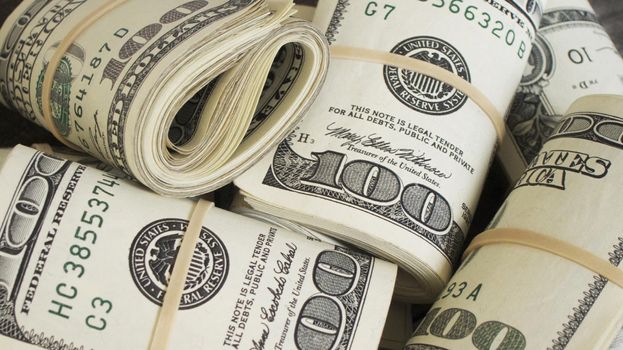Economist: New coronavirus package will have ‘immediate stimulative effects’
by March 14, 2021 10:13 am 2,738 views

University of Arkansas Sam M. Walton College of Business economist Mervin Jebaraj said the newly signed COVID-19 federal relief package will have “immediate stimulative effects.”
The $1.9 trillion American Rescue Plan was signed into law last week by President Joe Biden. In addition to almost $80 billion in funding more vaccine distribution and COVID testing, the following are key stimulus components of the new law:
• $1,400 stimulus checks
It is estimated that up to 85% of U.S. households will receive direct payments of $1,400 per person. Those checks are estimated to be sent out by late March.
• Unemployment benefits
The bill included $300-a-week federal unemployment benefits through September and allowing the first $10,200 of unemployment benefits received in 2020 tax-free for U.S. households earning less than $150,000.
• Child tax credit
The tax credit rises from $2,000 a child under 17 to $3,600 for children up to age five and $3,000 for children aged between six and 17.
• State, local government aid
The legislation provides $350 billion to state, local and tribal governments to cover deficits resulting from the pandemic. It also includes $130 billion to schools to help them reopen and/or improve ventilation and take other health safety measures. Universities will receive $40 billion in pandemic response assistance.
• Small business support
The legislation also sets aside almost $80 billion for small business support, including an extension of the Paycheck Protection Program and direct support for restaurants.
Jebaraj said the stimulus checks build on a December 2020 plan that provided about $600 per eligible person. Combined with the new $1,400 and eligible adults will have received $2,000 in about a three-month period.
“Put those two things together, that’s $2,000 going to households,” Jebaraj said. “The design of that has changed in the sense that now it pays out to every dividend in equal amounts of the old CARES Act. It was $1,200 for the adults, $500 per dependent. In this particular iteration, it’s just going to be $1,400 for adults and dependents. So if you’re a family of four, between the $600 that you got in December and the $1,400 that should be hitting people’s accounts sometime later this month, that’s $2,000 per person. So if you’re a family of four, two adults and two children, you’re looking at $8,000 hitting your bank account in that time period.”
The boost to unemployment benefits is another immediate stimulative ingredient that Jebaraj said should resonate in the economy.
“Those [benefits] have been extended all the way through to September. So that’s good news that provides a $300 weekly boost to state level unemployment benefits, which as we discussed several times, only cover about 45% of a person’s wages. This gets you a lot closer to being whole while you remain unemployed,” he said.
“The unemployment is concentrated in leisure and hospitality, in manufacturing, in education, health services. So to see this $300 boost exist all the way through to September, it gives a lot more economic security to those families that have been unemployed for a very long period of time. And in particular, those sectors are unlikely to recover very fast,” he added.
Jebaraj also discussed aspects of the child tax credit from the new stimulus bill as well as an upwardly revised state unemployment rate. You can watch his full interview below.
